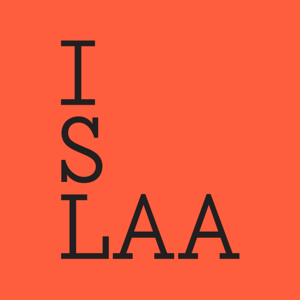March 16–June 2, 2023
The Institute for Studies on Latin American Art (ISLAA) is delighted to announce the opening of Ñande Róga: The Feliciano Centurión Archival Collection. This exhibition explores the work, communities, and context of Paraguayan artist Feliciano Centurión (1962–96). During his brief but prolific career, Centurión developed a unique body of work inspired by folk art and queer aesthetics, often incorporating household textiles, references to the natural world, and poignant phrases through which he reflected on personal and universal experience.
Ñande róga means “our home” in Guaraní, which has been the primary language spoken in Paraguay since before the Spanish colonial conquest. There are two ways of addressing the first-person plural in Guaraní: ñande refers to an inclusive “we,” where everyone participates, while ore implies that some member of a social group has been excluded. This difference, which is absent in Spanish and English, reveals an insightful understanding of community and belonging.
Inspired by this notion of collectivity, this exhibition reflects on the life and work of Centurión through his archival collection at ISLAA. Centurión’s practice was profoundly influenced by the countryside of Paraguay, the underground cultural scene of Buenos Aires in the 1990s, and the LGBT liberation movements of postdictatorship Argentina. Resulting from the resonances of these various communities and his deep interest in Paraguayan crafts such as ñandutí textiles, his works are evocative of domesticity, care, healing, and spirituality.
The exhibition brings together drawings, textiles, and sculptures with archival materials, many of which have never been published or shown publicly. These items offer insight into Centurión’s studio practice and his relationships with other artists and thinkers working in Buenos Aires and Asunción in the 1990s. For Centurión—a gay man living through the most tumultuous years of the ongoing AIDS epidemic in Latin America—the bonds of friendship he made during this period were a powerful grounding force in both his art and his life. It is clear from the works and archival ephemera presented in Ñande Róga that Centurión’s work existed within the inclusive Guaraní “we.”
This linguistic nuance fueled the development of an installation design loosely composed of concentric circles, in which original artworks are surrounded by a perimeter of facsimiles of press clippings, documentary photographs, and notes drawn from Centurión’s archival collection at ISLAA. Together, they provide new perspectives on the lives and practices of Centurión and his peers.
Ñande Róga: The Feliciano Centurión Archival Collection is curated by Eduardo Andres Alfonso, Angelica Arbelaez, María Carri, Rachel Eboh, Laura Hakel, Kyle Herrington, and Guy Weltchek, with guidance from Karin Schneider and ISLAA. This iteration is organized by Olivia Casa, ISLAA’s exhibition and curatorial manager.
Ñande Róga was originally presented at the Hessel Museum of Art in Annandale-on-Hudson, New York, in December 2021, as the culmination of a fall 2021 graduate course at the Center for Curatorial Studies, Bard College, led by Karin Schneider and supported by ISLAA as part of its Research Seminar Initiative.
A coinciding solo exhibition, Feliciano Centurión: Telas y Textos, is on view February 5–May 18, 2023, at the Institute of Fine Arts’ James B. Duke House. The works on view are on loan from the ISLAA collection with funding, archival, and research support from ISLAA.
Ñande Róga is accompanied by a booklet featuring texts by the exhibition’s curators and Mónica Giron and designed by Ramón Tejada. Physical copies will be distributed free of charge at ISLAA, and a digital version will be available to download at islaa.org in March.
The exhibition will open with a reception on Thursday, March 16, from 5 to 8pm. Guests are encouraged to sign up in advance using this online form.
About ISLAA
The Institute for Studies on Latin American Art (ISLAA) expands scholarship and public engagement with art from Latin America through its program of exhibitions, publications, lectures, and partnerships with universities and art institutions.

